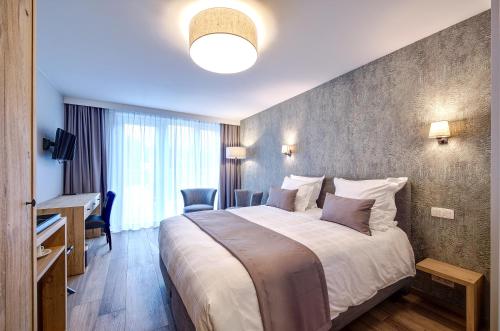Lifts on the old Canal du Centre, Belgium
An elevator for boats? Who would have thought of such a thing?
Well, the Belgians! And not just one elevator – but four!
Along the old Canal du Centre, a major maritime thoroughfare that cuts through Wallonia, the water level changes by about 66 metres. The only way to make it navigable in both directions was to come up with something ingenious, so they did.
Most canals around the world use locks to manage a change in water level.
You’ve probably seen this before – where a boat goes into a small area with gates on either end. With one gate closed and one open, water flows in and moves the vessel to the right height.
But the idea won’t work for the huge difference on the Canal du Centre.
And so the answer was to use a lift. And the key was to make it simple. In a particularly clever way.
This technology had already been thought of – by a British engineer called Edwin Clark. He presented it to the Belgian authorities and they went for it.
The idea is this. The lift sits between two stretches of water that are at different levels, kept that way by a dam.
The lift consists of two large chambers filled with water that can each hold a boat. They are connected by a hydraulic system so that one is always at the top and one at the bottom.
When a boat needs to move between the levels, a bit of water is added to the chamber at the top. This makes it heavier than the one at the bottom. And… can you see where this is going?
Well, gravity does the rest.
The heavier one moves downwards and the hydraulic system connecting them automatically moves the lighter one up to the top.
The four lifts are located along a seven kilometre stretch of the Canal du Centre and it’s easy to walk along to see them by yourself. The path that runs along the bank on one side is popular with joggers, cyclists and dog walkers.
It makes you realise that these lifts – although not in a city – are close enough to houses to be part of recreation areas.
Even today they cut a striking figure on the canal. The lifts are huge and you can see them for a long time as you approach, like enormous metal spiders hovering over the water.
There’s a beauty to their industrial design and, although they clash with the natural surroundings, they also look like they are where they belong.
The first lift went up in 1888. It was an impressive piece of engineering for the time. Not because it was complicated but because, as I’ve mentioned, it was quite simple.
But sometimes coming up with the simplest ideas can be the hardest.
It took quite a while until the next three were opened further along the canal – that happened in 1917.
With all of the lifts in place, boats were now changing height by 66 metres over a a stretch of just 7 kilometres.
These four lists along the Canal du Centre were included on the World Heritage List by UNESCO in 1998.
I have to say, Belgium has some strange places on the list and this is one of them. But I do find it very interesting to visit, at least, and quite visually impressive.
Only eight lifts like this were ever built around the world, and these are the only ones that still exist in their original working condition. That makes them worth protecting.
THE BEST ACCOMMODATION IN LA LOUVIERE
To visit the Canal du Centre, the easiest place to stay is the charming town of La Louviere.
BUDGET
For a very nice and affordable room, I would recommend Hotel Tristar.
RUSTIC
There’s also the wonderful Hotel Le Val-Fayt, which is set in a traditional 17th-century farmhouse.
LUXURY

And I think the nicest hotel, just out of town, is Au fil de l’eau.
Thanks for writing this post! As I said before, not much is written about UNESCO sights in Belgium and the Netherlands so your website provides a good source for travel planning!
Odd but interesting choice for a UNESCO world heritage site – but it is quite impressive that it is the only one still functioning in the world!
This is amazing!
Great review.
Photos beautiful.
I got a real pleasure.
Thank you!
This place is the best for boating. But now changing this place height by 66 metres over a a stretch of just 7 kilometres.
Now this is very beautiful.
I want to see that..
It’s easy to get to and free to visit so I’m sure you could get there one day!
I have just returned from a boating trip which including using Edwin Clark’s original hydraulic Lift at Anderton, Cheshire, England. Although now electrically operated, it is fully functioning. It was closed in 1983, but re-opened in 2002.
I went up and down the four lifts in Belgium in our narrow boat in the 1990s.